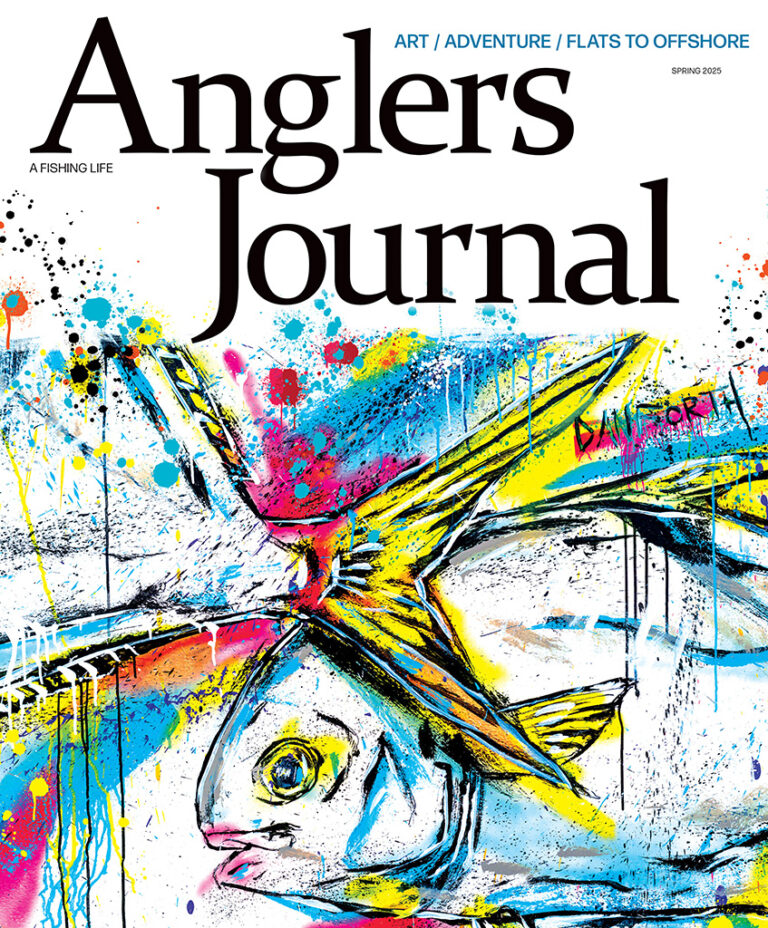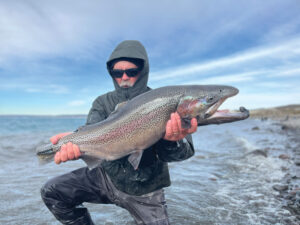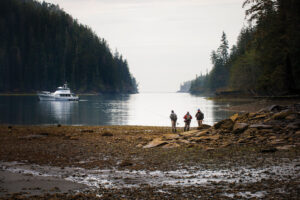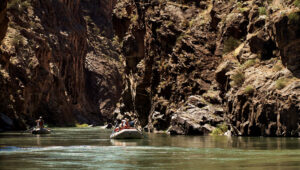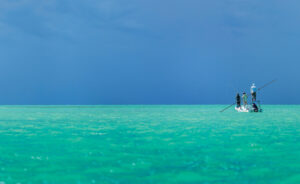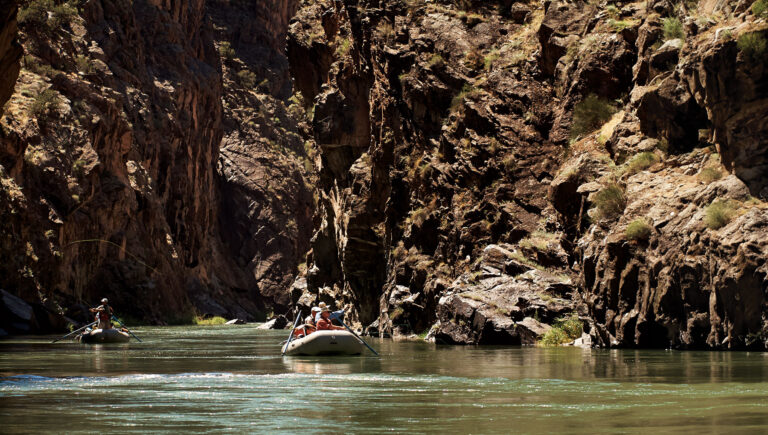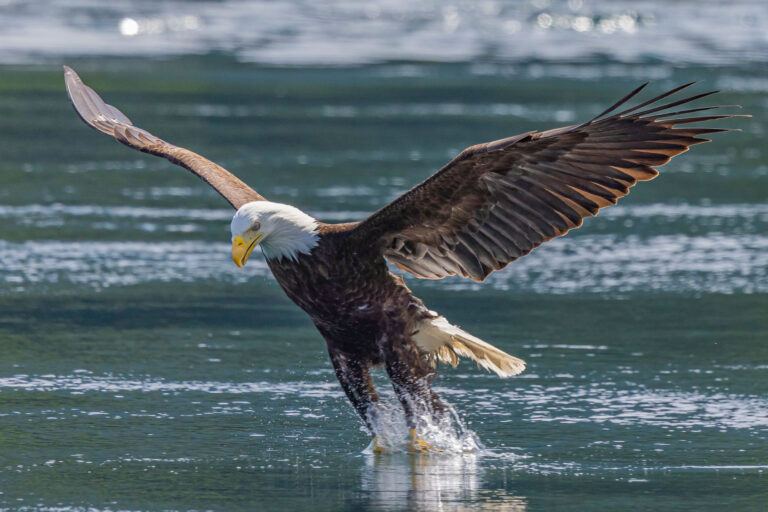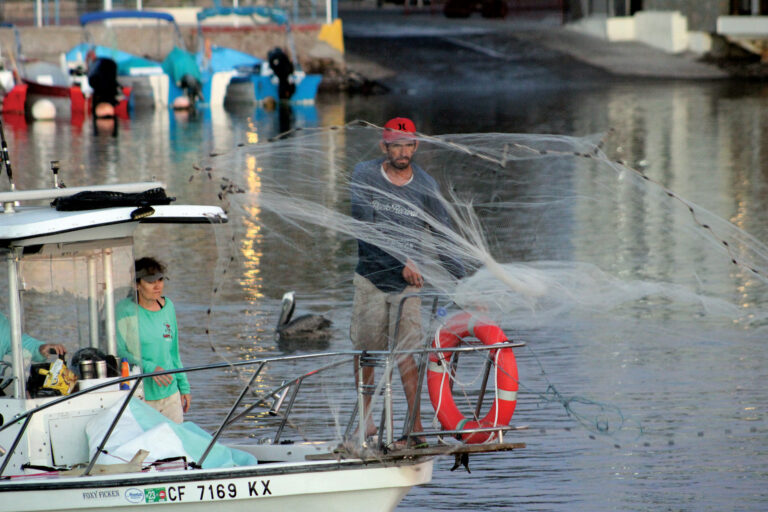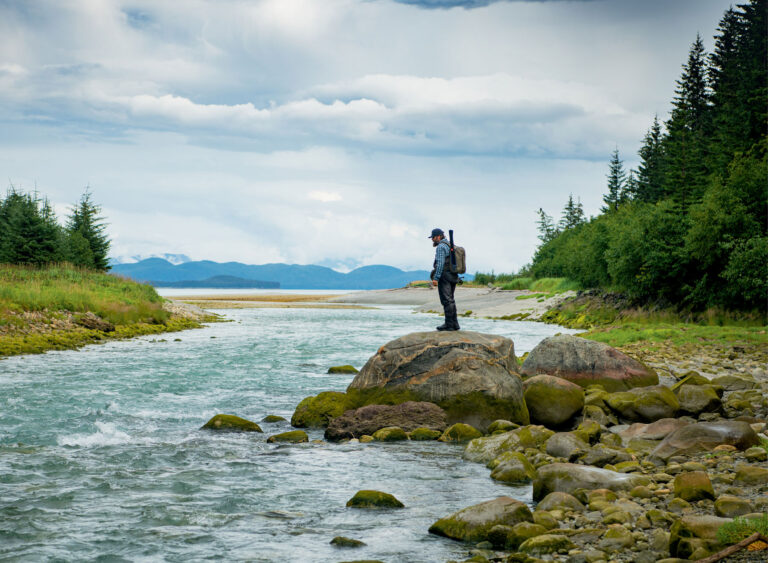Art by Flick Ford
The Wild Ones

It was my second day in the Alaskan bush. Light rain accompanied us downriver as the salmon made their way upstream. We pulled our raft into a swirling eddy at a confluence with a big tributary. I hopped out of the boat and waded up to my knees. I began my cast, and the heavy conehead of the black-and-white Dolly Llama fly pulled against my 7-weight rod as the Mylar flash rippled through the air. The fly landed on the edge of the seam. I made several strips until I felt an aggressive tug, then yanked back to set the hook. The fish danced and jumped as it pulled line off my reel.
A few minutes later, I had my first coho. As I stood in the water holding the fish, an eternal bond was formed.
After five years of guiding in Alaska with Wild River Guides, the silver coho is undisputedly my favorite salmon to target. They are perfect gamefish. They are eager to eat flies and top water. They jump, fight hard, get big and taste great. What more could an angler want?
The Alaskan coho’s size and power are enough to impress even this angler, who grew up saltwater fly-fishing. In my first encounters with coho, I felt at home, like I was fighting the fish I cut my teeth on. Then it dawned on me: These are saltwater fish in their own right. Coho are anadromous — born in the river but spending the majority of their lives at sea, returning to the rivers only to spawn.
When late July comes, I look for the coho’s distinctive black tail as I row my raft down the river. During the first sighting of the summer, I regress to a childlike state, awestruck by the sight of one of my favorite fish. Silvers are the last salmon to enter the rivers each season, and by September they dominate coastal western Alaska.
Imagine feasting your eyes on hundreds of large, silver fish that are eager to strike at anything they view as a threat. Their appearance is unmistakable to the trained eye. Small, black spots sprinkle their backs; they wear iridescent, rainbow-mirrored gill plates; and they carry a jet-black tail. The males are known for their downward-hooked nose.
Coho are drawn to an angler’s offering with a magnetic force. They’ll chase a fly or spinner and engulf it at your feet, right before your eyes. Once they are on the end of the line, they are a true spectacle to watch. They cartwheel across the surface with explosive jumps, leaving holes in the river as they go. Lightning-fast changes in direction confuse anglers and challenge their skill as the fish dive under the boat, into the wood or through a fast current. Broken rods, damaged nets, bent hooks — all are common during a day of coho fishing.
The coho’s aggression creates an incredible opportunity to catch 50 or more fish in a day. On days when my guests find the greatest success, the fish leaves its mark: The angler inevitably ends up with aching reminders of the battles. I have genuine respect for the way these fish cast a spell over those who chase them.
John Jinishian splits his time between guiding in Alaska and Montana.
This article originally appeared in the Spring 2019 issue of Anglers Journal magazine.
Subscribe to Anglers Journal here ▶

